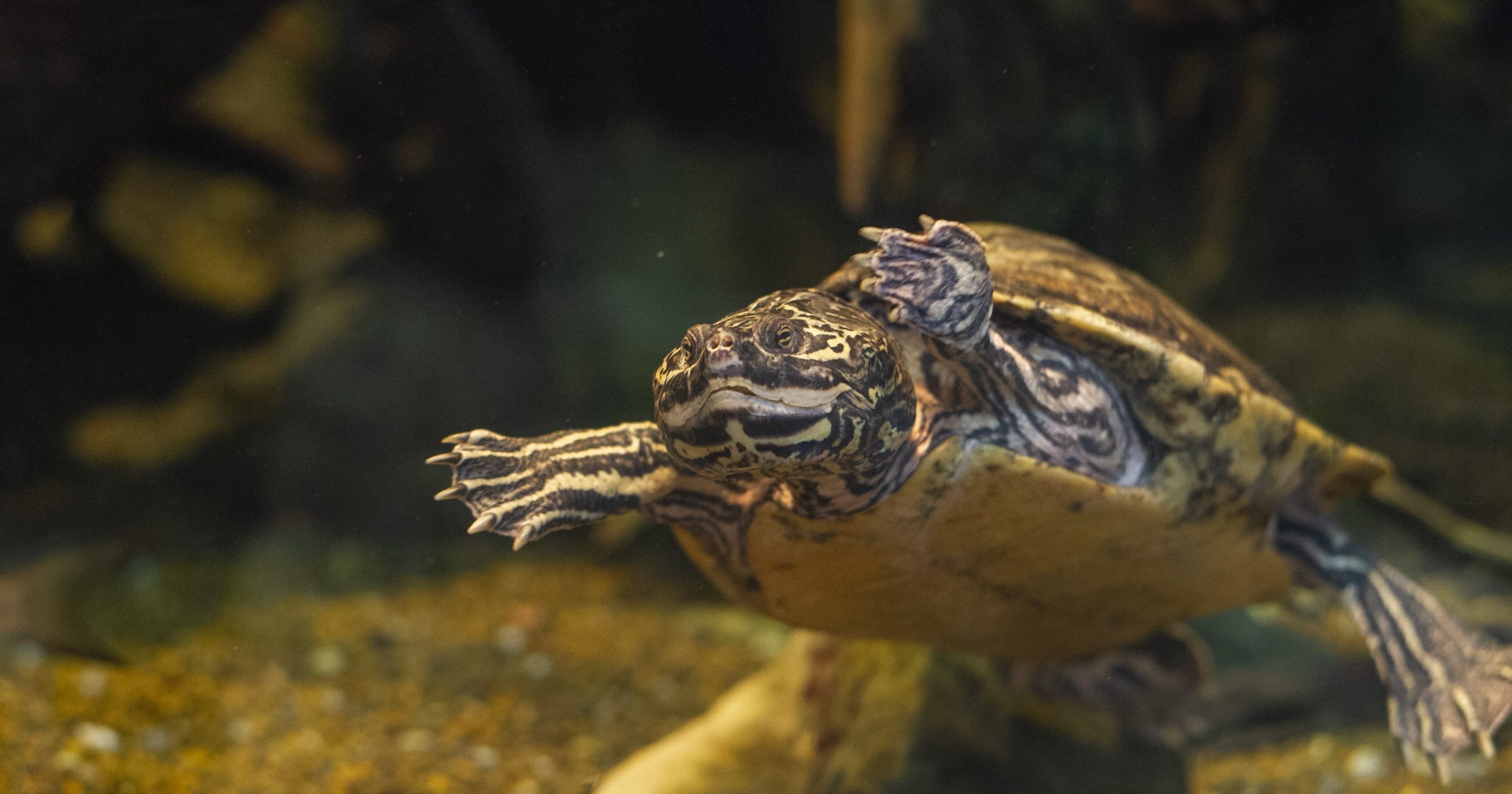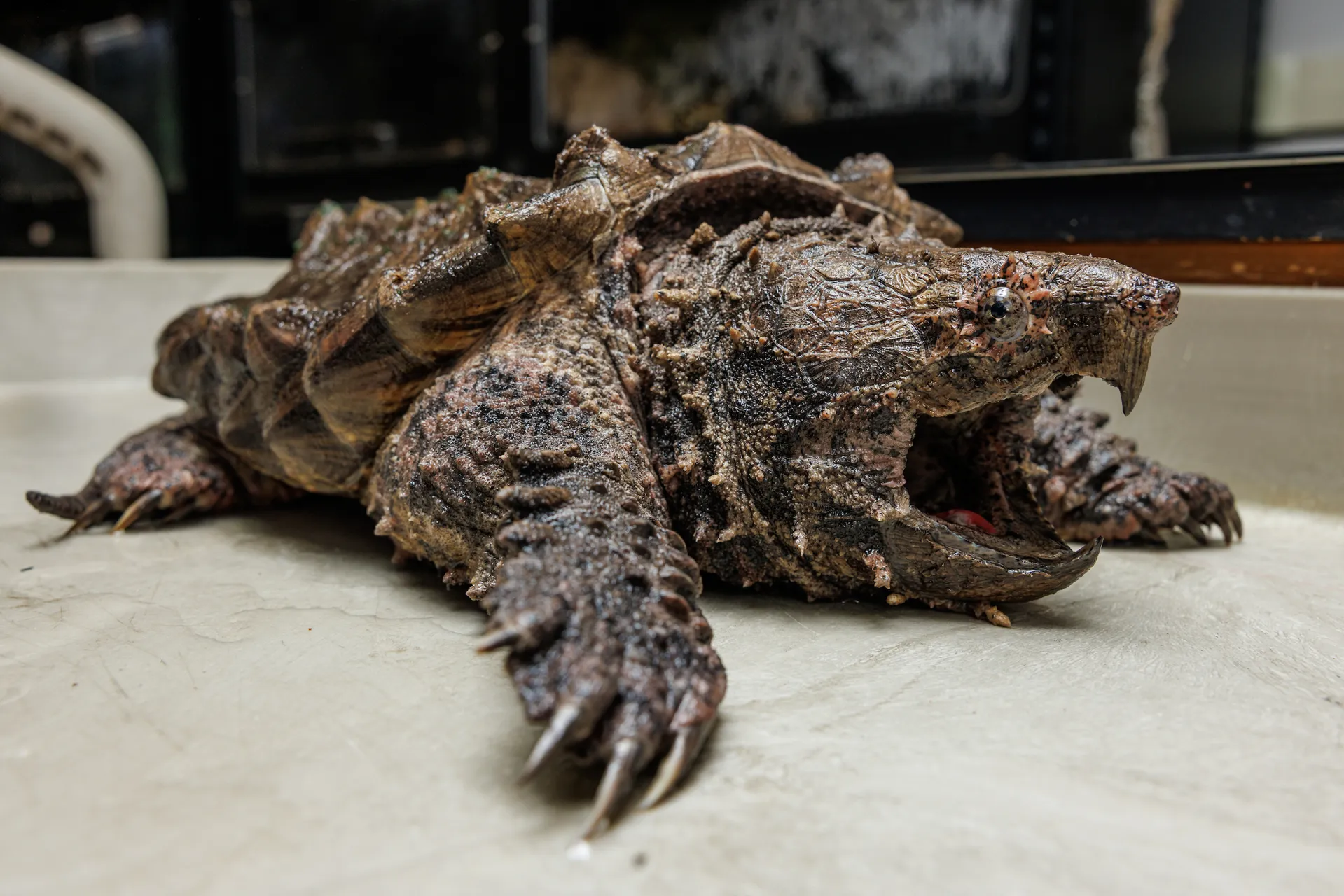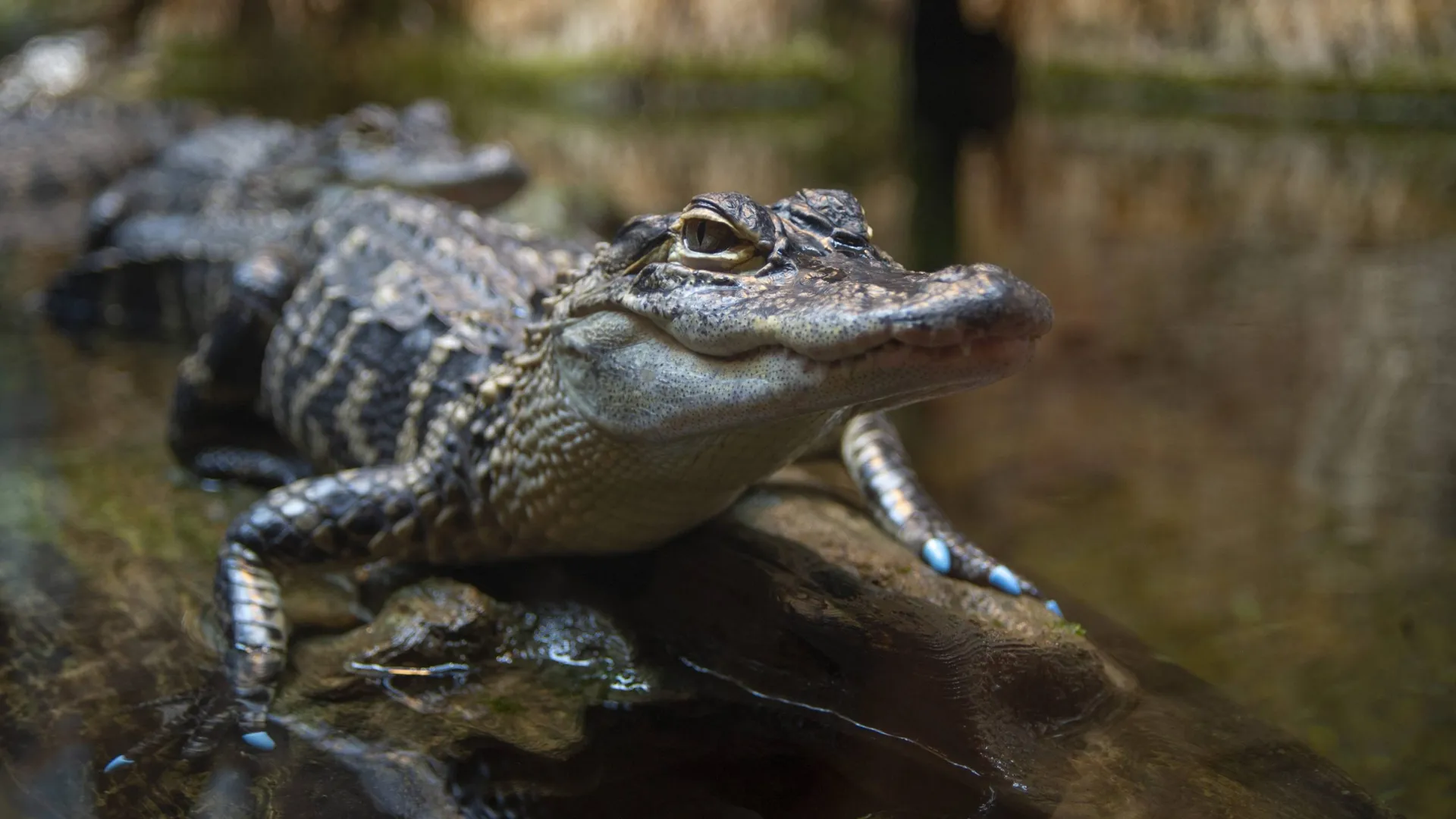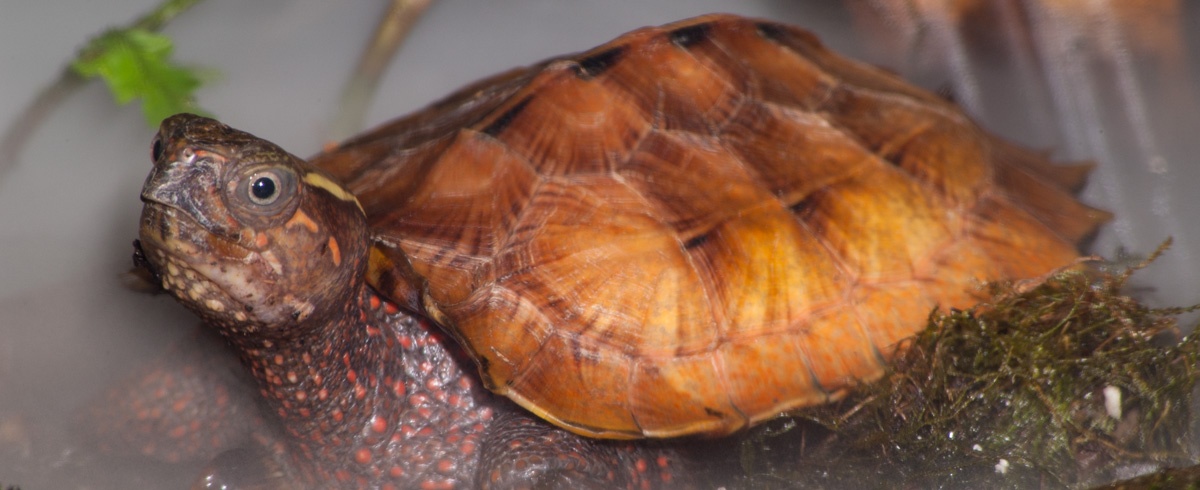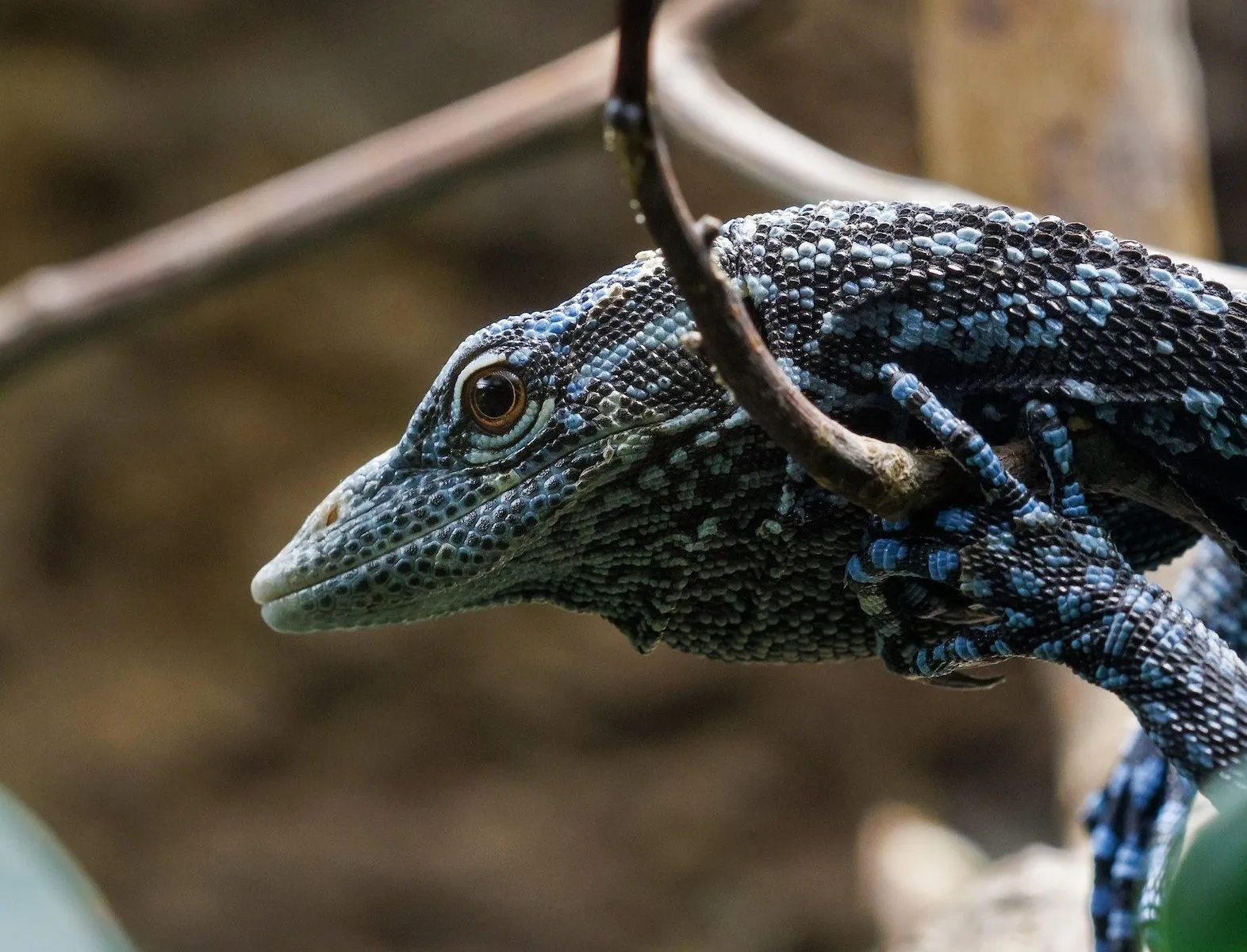On Exhibit
Delta Country
Male Barbour's map turtles only grow to 5.5 inches (14 centimeters) while females grow to 12.5 inches (31.7 centimeters). A difference in the size or shape of male and females of the same species is called sexual dimorphism. In this species one of the benefits of the size difference is that males and females feed on different prey so there is no competition between the two.
The greatest threat to the Barbour's Map Turtle is the rapid degradation and alteration of habitat in and adjacent to the rivers of the southeastern United States.
